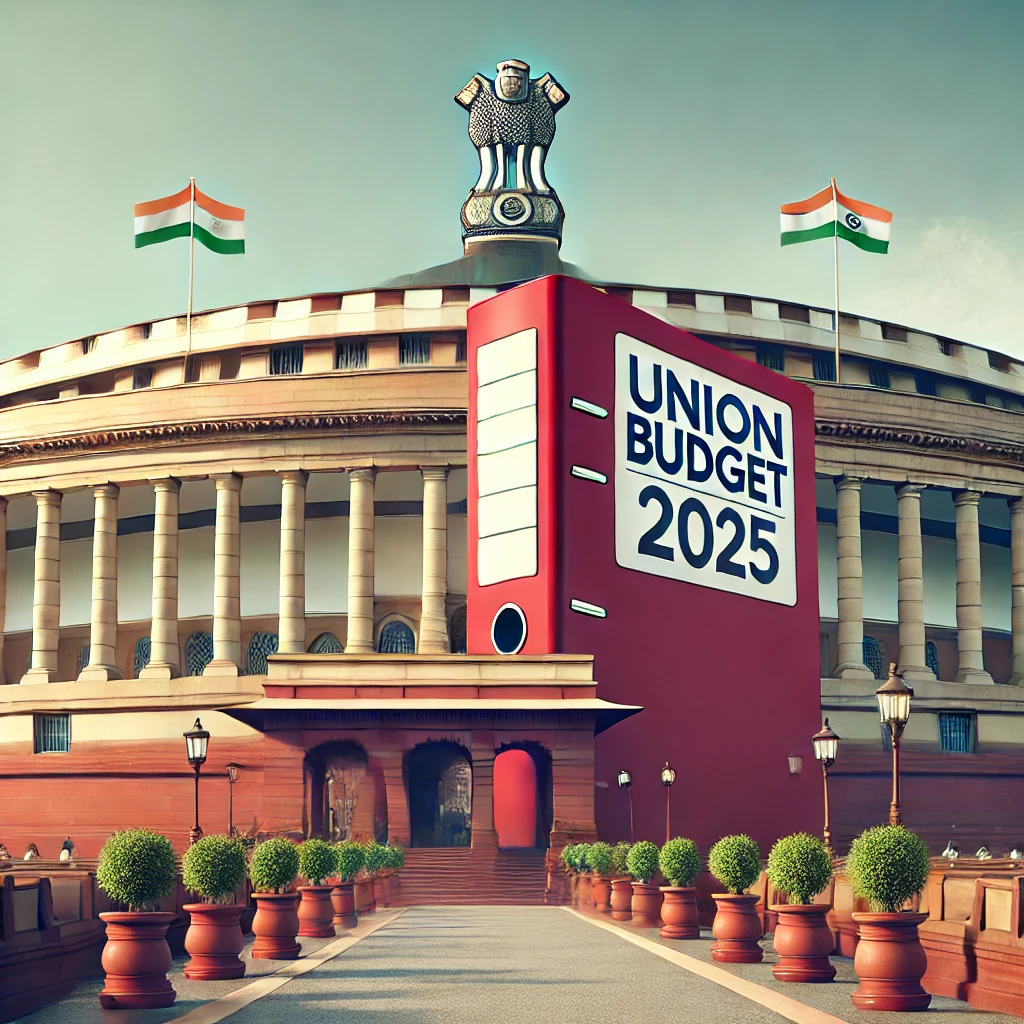The Union Budget 2025, presented by Finance Minister Nirmala Sitharaman on February 1, 2025, introduces a series of transformative measures aimed at stimulating economic growth, enhancing the financial well-being of the middle class, and fostering inclusive development across various sectors.
At Riddhi Siddhi Share Brokers, we are committed to providing you with a comprehensive analysis of these developments to inform your investment strategies.
1. Personal Income Tax Reforms: Empowering the Middle Class
In a landmark move, the government has overhauled the personal income tax structure to increase disposable income for middle-class taxpayers, thereby boosting consumption and savings.
Revised Income Tax Slabs under the New Regime:
- Income up to ₹4 lakh: No Tax
- ₹4 lakh to ₹8 lakh: 5%
- ₹8 lakh to ₹12 lakh: 10%
- ₹12 lakh to ₹16 lakh: 15%
- ₹16 lakh to ₹20 lakh: 20%
- ₹20 lakh to ₹24 lakh: 25%
- Above ₹24 lakh: 30%
Notably, individuals earning up to ₹12 lakh annually will now fall under the zero-tax bracket, providing substantial relief to a significant segment of taxpayers.
Implications for Investors:
- Increased Disposable Income: The tax savings are expected to enhance household spending capacity, potentially leading to increased investments in financial instruments.
- Boost to Consumption-Driven Sectors: Sectors such as FMCG, automotive, and real estate may experience heightened demand, presenting investment opportunities.
2. Capital Expenditure and Infrastructure Development
The budget outlines a capital expenditure of ₹11.2 lakh crore for the fiscal year 2025-26, marking a 10% increase from the previous year.
Key Initiatives:
- Infrastructure Expansion: Significant allocations have been made for the development of highways, railways, and urban infrastructure, aiming to improve connectivity and support economic activities.
- Affordable Housing: Enhanced deductions for housing loans are introduced to make homeownership more accessible, which is anticipated to stimulate the real estate market.
Implications for Investors:
- Construction and Allied Industries: Companies involved in construction, cement, steel, and related sectors are poised to benefit from increased government spending.
- Real Estate Sector: The focus on affordable housing may lead to growth opportunities in residential real estate investments.
3. Agricultural Reforms and Support for Farmers
The budget places a strong emphasis on the agricultural sector, introducing measures to enhance productivity and support farmers.
Key Announcements:
- Mission for Aatmanirbharta in Pulses: A six-year mission focusing on self-reliance in pulses production, targeting key crops like Tur, Urad, and Masoor.
- Kisan Credit Card (KCC) Loan Limit Increase: The loan limit under the Modified Interest Subvention Scheme has been raised from ₹3 lakh to ₹5 lakh, providing greater financial access to farmers.
Implications for Investors:
- Agri-Tech and Allied Sectors: Companies offering technological solutions and services to the agricultural sector may find new growth avenues.
- Rural Consumption: Improved financial stability for farmers could lead to increased demand for consumer goods in rural areas.
4. Support for Startups and MSMEs
Recognizing the pivotal role of startups and Micro, Small, and Medium Enterprises (MSMEs) in economic growth, the budget introduces several supportive measures.
Key Measures:
- Extended Tax Holiday for Startups: The eligibility period for startups to avail tax exemptions under Section 80-IAC has been extended to March 31, 2030, allowing them to claim a 100% tax deduction on profits for any three consecutive years within their first ten years of operation.
- Increased FDI in Insurance: The Foreign Direct Investment (FDI) limit in the insurance sector has been raised from 74% to 100%, encouraging greater foreign participation and capital inflow.
Implications for Investors:
- Venture Capital and Private Equity: The extended tax holiday makes the startup ecosystem more attractive for investors seeking high-growth opportunities.
- Insurance Sector: Increased FDI limits may lead to consolidation and expansion opportunities within the insurance industry.
5. Fiscal Prudence and Economic Outlook
The government has set a fiscal deficit target of 4.4% of GDP for the fiscal year 2025-26, down from a revised 4.8% in the current year.
Key Highlights:
- Revenue Mobilization: Despite significant tax reforms, the government plans to manage the fiscal deficit through increased market borrowing, with gross market borrowing estimated at ₹14.82 trillion.
- Debt Reduction Strategy: A roadmap has been laid out to reduce the debt-to-GDP ratio to 50% by March 2031 from the current 57.1%, aligning with global fiscal standards.
Implications for Investors:
- Bond Markets: Increased government borrowing may influence bond yields, affecting fixed-income investments.
- Investor Confidence: Commitment to fiscal discipline is likely to bolster confidence among domestic and foreign investors.
6. Sectoral Impacts and Market Reactions
The budget’s announcements have elicited varied responses across different sectors, influencing market trends.
Market Overview:
- Benchmark Indices: The BSE Sensex experienced fluctuations, closing with a marginal gain of 5 points, while the NSE Nifty ended slightly lower.
Sectoral Highlights:
- Consumer and FMCG: The reduction in personal income tax rates is anticipated to boost disposable incomes, leading to increased consumer spending. This optimism was reflected in the market, with FMCG stocks witnessing gains.
- Automobile: The auto sector benefited from the anticipated rise in consumer spending due to tax cuts, with key players like Maruti Suzuki experiencing notable gains.
- Infrastructure and Capital Goods: Despite the government’s continued focus on infrastructure development, the modest increase in capital expenditure led to a subdued response in this sector. Companies such as Larsen & Toubro saw a decline in their stock prices.
- Insurance: The proposal to increase the Foreign Direct Investment (FDI) limit in the insurance sector to 100% was well-received, with major insurance stocks rallying post-announcement.
- Agriculture: Initiatives like the PM Dhan-Dhaanya Krishi Yojana, targeting enhanced crop productivity, positively impacted agriculture-related stocks, which surged up to 13%.
Investor Takeaway:
The budget’s emphasis on boosting consumption through tax reliefs is expected to drive growth in consumer-centric sectors. However, the modest increase in capital expenditure has tempered expectations in the infrastructure domain. Investors are advised to consider these sectoral dynamics when making investment decisions.
Final Thoughts
The Union Budget 2025 presents a comprehensive roadmap aimed at fostering economic growth, enhancing social welfare, and promoting sustainable development. For investors, the budget’s multifaceted initiatives across various sectors offer a plethora of opportunities.
At Riddhi Siddhi Share Brokers, we are dedicated to assisting you in navigating these developments to make informed investment decisions.
📞 For personalized investment advice and to explore opportunities arising from the budget, contact us today at www.riddhisiddhisharebrokers.com or visit our office in Bhayander (W), Mumbai.
📌 Disclaimer: This analysis is for informational purposes only and should not be construed as financial advice. Investors are encouraged to consult with a qualified financial advisor before making investment decisions.

